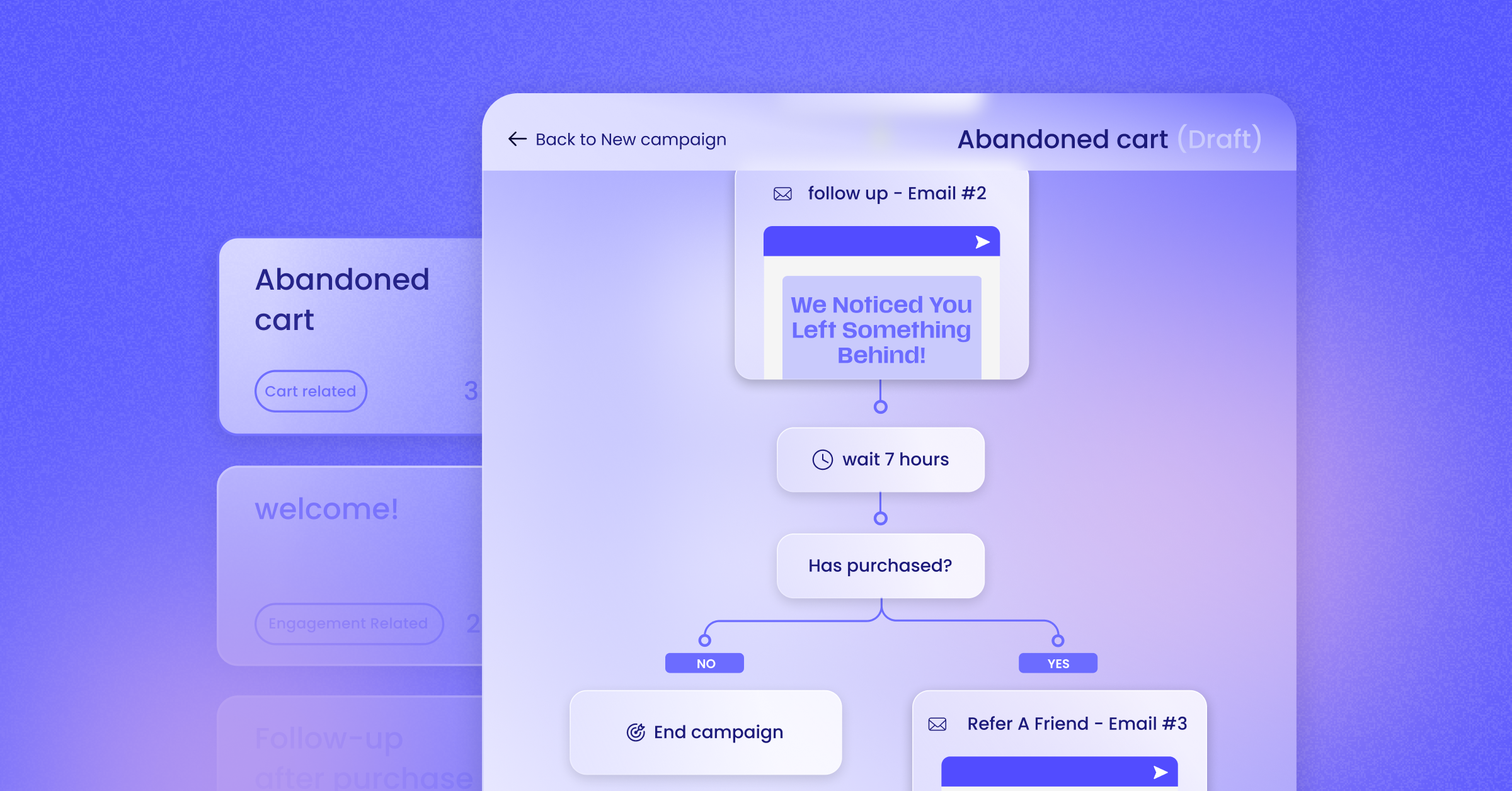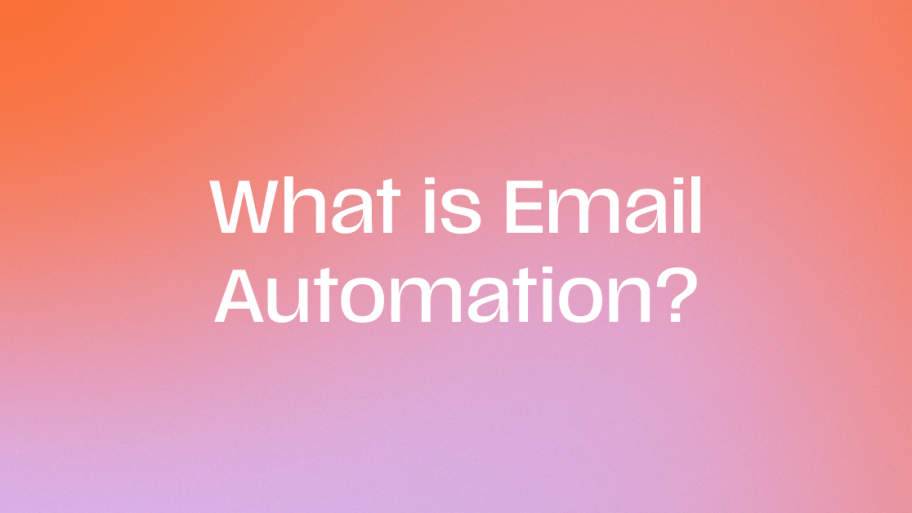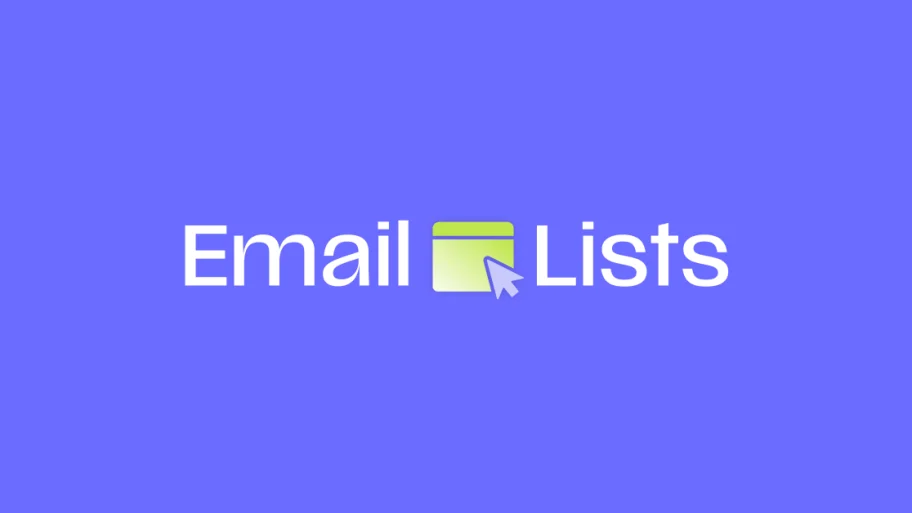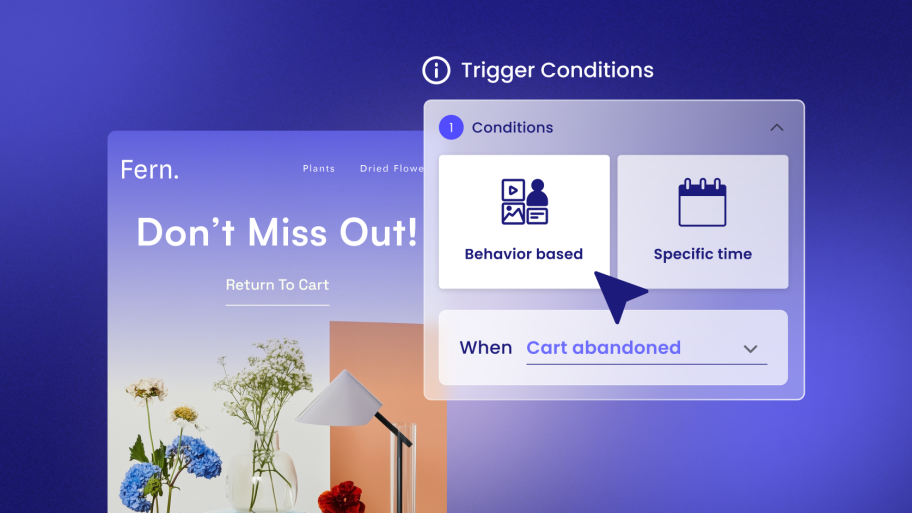Key Takeaways
- Native Integration is Key: The best platform for you is often the one that integrates most seamlessly with your existing technology stack, especially your website’s CMS. A truly native solution can eliminate countless technical headaches and data silos.
- It’s Not Just About Email: Modern marketing automation is a comprehensive communication toolkit. Leading platforms incorporate email, SMS, lead generation, detailed segmentation, and robust analytics into a single, unified system.
- The User Matters Most: Whether you’re a solo entrepreneur, a marketing agency, or a large enterprise, the platform’s ease of use is paramount. An intuitive interface and pre-built workflows significantly shorten the time to value.
- Scalability is Non-Negotiable: Your business will grow, and your marketing automation platform must be able to grow with it. Look for fair, scalable pricing models that won’t penalize your success.
- Focus on Demonstrable ROI: The ultimate goal of automation is to generate revenue. The best platforms provide clear, real-time analytics that directly attribute marketing activities to sales and customer retention.
The Top 8 Marketing Automation Platforms for 2025
Navigating the crowded market of automation tools can be a challenge. To help you make an informed decision, we’ve compiled a list of the eight best platforms for 2025. We’ll explore their strengths, features, and ideal use cases to help you find the perfect fit for your business needs.
1. Send by Elementor
Send by Elementor positions itself as more than just a marketing tool; it’s a comprehensive, WordPress-native communication toolkit designed specifically for web creators, freelancers, agencies, and WooCommerce stores. Its fundamental advantage lies in its deep, seamless integration with the world’s most popular website platform. By living directly inside WordPress, Send eliminates the common friction points—like API conflicts, data syncing errors, and plugin compatibility issues—that often plague businesses using external marketing platforms. This native approach creates a unified, intuitive experience that feels like a natural extension of the WordPress dashboard you already know.
Who Is It For?
The primary audience for Send is the Web Creator community. This includes individual freelancers and digital agencies that build websites for clients, particularly those focused on the Elementor and WooCommerce ecosystems. For these creators, Send is a game-changer. It provides a straightforward way to expand their service offerings beyond one-off website builds and into the lucrative world of recurring marketing services. By managing their clients’ email, SMS, and automation campaigns directly from the WordPress backend, they can deliver ongoing value, strengthen client relationships, and build sustainable, recurring revenue streams.
It’s also a perfect fit for small to medium-sized businesses and WooCommerce store owners who manage their own marketing. These users need powerful automation capabilities without the overwhelming complexity and steep learning curve of many enterprise-level platforms. Send’s intuitive interface and pre-built automation flows make it incredibly accessible, allowing business owners to set up essential campaigns like abandoned cart reminders and welcome series in minutes.
Why It Stands Out in 2025
- Truly WordPress-Native: This cannot be overstated. Unlike platforms that simply offer a WordPress plugin for integration, Send was built from the ground up for WordPress. This means everything from contact management to campaign analytics happens within a single, familiar environment. The result is a faster, more reliable, and significantly less complicated user experience. You’re not just syncing data; you’re working within a single, cohesive system.
- An All-in-One Communication Toolkit: Send consolidates the essential tools modern businesses need to communicate with their audience. It seamlessly combines Email Marketing, SMS Marketing, Marketing Automation Flows, Audience Segmentation, and Lead Generation Tools into one platform. This eliminates the need to subscribe to and manage multiple disparate services, reducing both cost and complexity.
- Effortless Setup and Management: Simplicity is at the core of Send’s design philosophy. It comes packed with ready-made templates and pre-built automation flows for common scenarios like welcoming new subscribers, re-engaging inactive contacts, and recovering abandoned carts. This “set-and-forget” approach empowers users to implement sophisticated marketing strategies without needing to be an automation expert. The drag-and-drop email builder, designed with Elementor’s best practices in mind, makes creating beautiful, responsive emails a breeze.
- Demonstrable ROI Through Clear Analytics: For web creators, proving the value of their services to clients is crucial. Send makes this easy. Its real-time analytics are built directly into the WordPress dashboard, providing clear, actionable insights into campaign performance. More importantly, it offers revenue attribution, directly connecting marketing activities to sales and customer retention. This allows creators to present clients with concrete data showing how their efforts are boosting the bottom line.
- Empowers Web Creators: Send is uniquely positioned to transform how web creators do business. It turns the common client request for “marketing help” into a significant business opportunity. By offering integrated email and SMS marketing services, creators can move from a project-based model to a retainer-based one, fostering long-term partnerships and securing predictable, recurring income.
Key Features in Action
- Marketing Automation Flows: Imagine a customer abandons their cart on a WooCommerce store. With Send, you can have a pre-built, multi-step automation flow that triggers instantly. It could send a reminder email after one hour, followed by an SMS with a small discount code 24 hours later, all without any manual intervention.
- Advanced Segmentation: You can easily create segments based on user behavior, purchase history, or form submissions. For example, you could build a segment of “VIP Customers” who have spent over a certain amount and send them exclusive offers, or target users who have downloaded a specific lead magnet with a relevant follow-up campaign.
- Unified Contact Management: Contacts from WooCommerce purchases, form submissions, and manual imports are all managed in one central location within WordPress. This 360-degree view of the customer allows for highly targeted and personalized communication.
- Drag-and-Drop Email Builder: The email builder mirrors the intuitive experience of Elementor. Users can create professional, on-brand emails that look great on any device, without writing a single line of code. Ready-made templates provide a perfect starting point for any campaign.
Summary
For the massive and growing community of WordPress and WooCommerce users, Send by Elementor is the most logical and powerful choice for marketing automation in 2025. It solves the biggest pain points of its target audience by delivering a truly native, all-in-one, and easy-to-use communication toolkit. By focusing on business impact and empowering its users to build stronger, more profitable relationships with their clients, Send isn’t just a tool—it’s a business growth platform.
2. HubSpot
HubSpot is a comprehensive inbound marketing, sales, and service software platform. It is designed to function as an all-in-one solution, providing a wide array of tools that cover the entire customer lifecycle. The platform is built around its own Customer Relationship Management (CRM) system, which serves as the central database for all customer interactions.
Key Functionalities
- Marketing Hub: Includes tools for email marketing, marketing automation, lead generation (forms, landing pages), social media management, and SEO.
- Sales Hub: Provides features for sales pipeline management, meeting scheduling, email tracking, and sales automation.
- Service Hub: Offers tools for customer support, including ticketing, knowledge base creation, and live chat.
- CMS Hub: A content management system for building and managing websites.
- Operations Hub: Focuses on data synchronization and automation across different applications.
The marketing automation functionality allows users to create workflows based on various triggers, such as email opens, link clicks, page views, and form submissions. These workflows can include actions like sending emails, updating contact properties, and creating internal notifications.
Target User
HubSpot is primarily targeted at small to medium-sized businesses (SMBs) seeking an integrated platform to manage their marketing, sales, and customer service operations. Its tiered pricing structure also makes it accessible to startups, while its enterprise-level features can accommodate the needs of larger organizations. The platform is often favored by businesses that are heavily invested in the inbound marketing methodology.
Pricing Model
HubSpot’s pricing is structured in tiers (Starter, Professional, Enterprise) for each of its Hubs. There is also a free tier that offers basic CRM, marketing, sales, and service tools. The cost scales based on the number of marketing contacts in the database and the level of features required. Bundles that combine multiple Hubs are available.
3. ActiveCampaign
ActiveCampaign is a customer experience automation platform that combines email marketing, marketing automation, and CRM tools. It is known for its powerful and flexible automation builder, which allows for the creation of complex, multi-branch workflows.
Key Functionalities
- Marketing Automation: The visual workflow builder is a core feature, enabling users to design automations based on a wide range of triggers and conditions. It supports if/else logic, split testing, and goal tracking within automations.
- Email Marketing: Includes a drag-and-drop email designer, email templates, and various email types (broadcast, triggered, targeted, autoresponders).
- CRM & Sales Automation: The platform includes a built-in CRM for managing contacts and deals. It supports lead scoring, pipeline automation, and task assignment for sales teams.
- Messaging: Supports SMS marketing and site messages as part of automation workflows.
- Integrations: Offers a large number of native integrations with third-party applications.
Target User
ActiveCampaign is designed for small to medium-sized businesses that require advanced automation and segmentation capabilities. It is particularly popular among B2B companies, digital product creators, and businesses with a focus on personalized customer journeys. Users who want to combine marketing and sales automation in one platform are a key demographic.
Pricing Model
Pricing for ActiveCampaign is primarily based on the number of contacts in the user’s database. The platform is offered in several tiers (Lite, Plus, Professional, Enterprise), with each tier unlocking additional features such as the CRM, landing pages, and advanced reporting.
4. Klaviyo
Klaviyo is a marketing automation platform that is specifically engineered for e-commerce businesses. It provides deep integrations with major e-commerce platforms like Shopify, BigCommerce, and WooCommerce, allowing it to leverage a rich set of customer data for personalization and segmentation.
Key Functionalities
- E-commerce Integrations: Klaviyo’s main strength is its ability to pull in data directly from e-commerce platforms, including browsing history, cart contents, and purchase data.
- Segmentation: Users can create highly specific segments based on customer behavior (e.g., viewed product, started checkout) and historical data (e.g., lifetime value, predicted next order date).
- Automation Flows: The platform includes a library of pre-built automation flows tailored for e-commerce, such as abandoned cart reminders, browse abandonment follow-ups, and customer win-back series.
- Multi-Channel Messaging: Supports both email and SMS marketing channels, which can be used together in automation flows.
- Predictive Analytics: Klaviyo uses data science to predict customer lifetime value, churn risk, and optimal sending times.
Target User
Klaviyo is built for e-commerce businesses of all sizes, from startups to large enterprises. It is the preferred choice for direct-to-consumer (DTC) brands that rely heavily on data-driven marketing and want to create highly personalized customer experiences.
Pricing Model
Klaviyo’s pricing is based on the number of contacts and the number of SMS messages sent. There is a free tier for businesses that are just starting out, which includes a limited number of contacts and email sends. The paid plans scale directly with the size of the contact list.
5. Mailchimp
Mailchimp is one of the most well-known email marketing platforms, which has evolved over time to include a broader set of marketing automation and e-commerce features. It is recognized for its user-friendly interface and strong brand identity.
Key Functionalities
- Email Marketing: Features a drag-and-drop email editor, a wide variety of templates, and A/B testing capabilities.
- Marketing Automation: Offers basic automation features, such as welcome series, date-based automations, and behavior-based triggers. More advanced, multi-step workflows are available in higher-tier plans.
- Audience Management: Provides tools for segmentation, tagging, and audience insights. It also includes a predictive demographics feature.
- Marketing Channels: In addition to email, Mailchimp supports landing pages, digital ads, social posting, and direct mail postcards.
- E-commerce: Integrates with popular e-commerce platforms to enable features like abandoned cart emails, product recommendations, and order notifications.
Target User
Mailchimp is primarily aimed at small businesses, bloggers, and startups that need an easy-to-use platform to get started with email marketing and basic automation. Its straightforward interface makes it accessible for users with limited technical expertise.
Pricing Model
Mailchimp offers a tiered pricing structure (Free, Essentials, Standard, Premium). The plans vary based on the number of contacts, monthly email sends, and the level of features included. The free plan has limitations on audience size and features.
6. Brevo (formerly Sendinblue)
Brevo is a digital marketing platform that offers a suite of tools including email marketing, SMS marketing, chat, and a CRM. It is known for providing a broad range of features at a competitive price point, making it an accessible all-in-one solution.
Key Functionalities
- Email & SMS Marketing: Core functionalities include designing and sending email and SMS campaigns.
- Marketing Automation: Includes a workflow editor that allows users to create automations based on contact behavior, such as email engagement and website visits.
- Transactional Messaging: Provides a robust system for sending transactional emails and SMS (e.g., password resets, order confirmations) via API or SMTP relay.
- CRM: A built-in CRM allows for the management of customer relationships and sales pipelines.
- Chat: A live chat feature can be added to a website to engage with visitors in real time.
- Landing Pages & Forms: Tools for creating landing pages and subscription forms to capture leads.
Target User
Brevo is suitable for small to medium-sized businesses that are looking for a comprehensive marketing and sales platform without a high price tag. Its inclusion of transactional email and a generous free plan makes it a popular choice for startups and businesses with budget constraints.
Pricing Model
Brevo’s pricing is primarily based on the number of email sends per month, rather than the number of contacts. It offers a free plan that allows for a significant number of contacts but limits daily email sends. Paid plans are available in tiers (Starter, Business, Brevo Plus) that offer higher sending limits and more advanced features.
7. Omnisend
Omnisend is another marketing automation platform designed specifically for e-commerce businesses. It positions itself as an easier-to-use and more affordable alternative to Klaviyo, while still offering powerful e-commerce-centric features.
Key Functionalities
- Email & SMS: The platform integrates email and SMS marketing, allowing them to be used in the same automation workflows. It also supports push notifications.
- E-commerce Automation: Provides pre-built workflows for common e-commerce scenarios, including abandoned cart, welcome series, and post-purchase follow-ups.
- Lead Generation: Includes a variety of customizable onsite lead capture forms, such as pop-ups, landing pages, and gamified “Wheel of Fortune” forms.
- Segmentation: Allows for the creation of audience segments based on shopping behavior, campaign engagement, and profile data.
- Reporting: Offers campaign and automation reports with a focus on e-commerce metrics like revenue generated and conversion rates.
Target User
Omnisend is targeted at small to medium-sized e-commerce merchants who are looking for a robust, multi-channel marketing automation solution that is easy to set up and manage. It appeals to store owners who want to combine email, SMS, and push notifications without managing multiple platforms.
Pricing Model
Omnisend offers a free plan that includes a limited number of contacts and email sends. Its paid plans (Standard and Pro) are based on the number of contacts in the list and offer different levels of features and sending credits for SMS and push notifications.
8. Adobe Marketo Engage
Adobe Marketo Engage is an enterprise-level marketing automation platform designed for large B2B organizations. It is a highly sophisticated and powerful tool that focuses on lead management, account-based marketing (ABM), and measuring marketing’s impact on revenue.
Key Functionalities
- Lead Management: Core features include lead scoring, routing, and nurturing to manage leads throughout the sales funnel.
- Email Marketing & Nurturing: Allows for the creation of complex, multi-stream lead nurturing programs.
- Account-Based Marketing (ABM): Provides tools to identify and target key accounts, coordinate marketing and sales efforts, and measure ABM performance.
- Marketing Analytics: Offers advanced reporting and analytics capabilities, including revenue attribution models that connect marketing campaigns directly to sales outcomes.
- Integrations: Features deep native integrations with major CRM platforms like Salesforce and Microsoft Dynamics.
Target User
Marketo is built for large enterprise B2B companies with dedicated marketing operations teams. Its complexity and power are suited for organizations with long sales cycles, a focus on lead quality, and a need for deep alignment between marketing and sales departments.
Pricing Model
Marketo’s pricing is quote-based and tailored to the specific needs of each customer. It is one of the more expensive platforms on the market, with costs determined by the size of the contact database and the specific product bundles required.
How to Choose the Best Marketing Automation Platform for You
Selecting the right platform is a strategic decision. The list above shows that there are many excellent options, but the “best” one is entirely dependent on your unique business context. Use the following criteria as a guide to evaluate your options and make a choice that aligns with your goals, resources, and existing technology.
1. Define Your Goals and Needs
Before you even look at a single feature list, you need to understand what you want to achieve. Are you trying to:
- Increase lead generation? Look for strong form builders and landing page creators.
- Improve lead nurturing for a long sales cycle? Advanced workflow capabilities and lead scoring are essential.
- Boost sales for your e-commerce store? Prioritize deep e-commerce integrations, abandoned cart flows, and behavioral segmentation.
- Enhance customer retention? Look for features that support re-engagement campaigns and post-purchase follow-ups.
Make a list of your top 3-5 marketing goals. This will be your north star during the evaluation process.
2. Evaluate Ease of Use
A powerful platform is useless if your team can’t figure out how to use it. Consider the technical skill level of the people who will be managing the software daily.
- Is the interface intuitive? Sign up for a free trial and spend time navigating the platform.
- How steep is the learning curve? Does the platform require a dedicated expert, or can a general marketer learn it quickly?
- What are the setup and onboarding processes like? Look for platforms that offer guided onboarding, pre-built templates, and clear documentation.
3. Scrutinize Integrations
Your marketing automation platform must work in harmony with the rest of your tech stack. A lack of integration can lead to manual data entry, data silos, and a broken customer experience.
- CMS Integration: Does it integrate seamlessly with your website platform (e.g., WordPress, Shopify)? A native integration is almost always superior to a third-party connector (like Zapier) because it’s more reliable, faster, and less complex.
- CRM Integration: If you use a separate CRM, is there a robust, bi-directional sync?
- E-commerce Integration: For online stores, how deep is the connection to your e-commerce platform? Can it pull in detailed customer data like purchase history and browsing behavior?
- API Access: If you have custom needs, does the platform offer a well-documented API for your developers?
4. Match Features to Your Needs
Don’t be swayed by a platform that has thousands of features you’ll never use. Refer back to your goals and identify the core functionalities you need.
- Channels: Do you need just email, or is SMS, live chat, or social media important?
- Automation Capabilities: Do you need simple, linear autoresponders, or complex, multi-branch workflows with if/else logic?
- Segmentation: How granular do you need to get? Can you segment based on behavior, demographics, and purchase history?
- Reporting and Analytics: Can you easily track the metrics that matter most to your business? Does it offer revenue attribution?
5. Consider Scalability
Your choice today should support your business tomorrow.
- Pricing Model: How does the pricing scale? Is it based on contacts, email sends, or features? Make sure the model aligns with your growth projections. Be wary of platforms that sharply increase prices as you become more successful.
- Feature Tiers: Will you need to make a significant jump to a much more expensive plan to unlock a single, critical feature?
- Performance: Can the platform handle a much larger database and higher volume of activity without slowing down?
6. Assess Support and Community
When something goes wrong or you need help building a complex campaign, good support is invaluable.
- What support channels are offered? (e.g., email, phone, live chat).
- What are the support hours? Are they in your time zone?
- Is there a knowledge base? Look for comprehensive documentation, tutorials, and video guides.
- Is there an active user community? A community forum or Facebook group can be a great resource for peer-to-peer help and advice.
By systematically working through these criteria, you can move beyond the marketing hype and choose a platform that is a true asset to your business, empowering you to build better customer relationships and drive measurable growth.
Frequently Asked Questions About Marketing Automation
Here are answers to 13 common questions to expand your understanding of marketing automation.
1. What is marketing automation, exactly? Marketing automation refers to software designed to automate repetitive marketing tasks. Its core purpose is to nurture leads, personalize marketing messages, and streamline workflows, allowing businesses to engage with customers more efficiently and effectively across multiple channels like email, SMS, and social media.
2. How is marketing automation different from basic email marketing? Basic email marketing focuses on sending one-off campaigns (like newsletters) to a list of subscribers. Marketing automation is far more advanced. It uses “if this, then that” logic, triggering communications based on user actions, behavior, or data. For example, it can automatically send a welcome series to new subscribers or a reminder to someone who abandoned a shopping cart.
3. Can small businesses really benefit from marketing automation? Absolutely. In fact, small businesses may benefit the most. With smaller teams and limited resources, automation allows them to compete with larger companies by delivering timely, personalized experiences without requiring a large marketing department. It frees up valuable time to focus on strategy and growth.
4. What are some common examples of marketing automation workflows?
- Welcome Series: A sequence of emails sent to new subscribers to introduce them to the brand.
- Abandoned Cart Reminders: Automatically emailing or texting customers who add items to their cart but don’t complete the purchase.
- Lead Nurturing: A series of communications designed to educate and build trust with a new lead over time.
- Re-engagement Campaigns: A workflow that targets inactive subscribers to try and win them back.
5. How do I measure the ROI of marketing automation? You measure ROI by tracking how your automation efforts contribute to your business goals. Key metrics include: lead-to-customer conversion rates, revenue generated from specific campaigns (revenue attribution), customer lifetime value (CLV), and cost per acquisition (CPA). A good platform will have built-in analytics to make this tracking straightforward.
6. What is the difference between B2B and B2C marketing automation? While they use the same core technology, the strategy differs. B2B automation often focuses on longer sales cycles, using tools like lead scoring and detailed nurturing campaigns to educate prospects and align with sales teams. B2C automation typically deals with shorter sales cycles and larger audiences, focusing on things like abandoned cart recovery, personalized product recommendations, and loyalty programs.
7. How long does it take to implement a marketing automation platform? This varies greatly depending on the platform’s complexity and the level of integration required. A user-friendly, native platform like Send by Elementor can be set up in minutes for basic workflows. An enterprise-level system like Marketo can take weeks or even months to fully implement and integrate with a CRM.
8. What are the most important features to look for in a platform? The most critical features are typically a visual workflow builder, robust segmentation capabilities, detailed analytics with revenue attribution, and seamless integrations with your core business systems (like your CMS and e-commerce platform).
9. Should my marketing automation tool include a CRM? It depends. For many small to medium-sized businesses, an integrated CRM is a huge advantage as it keeps all customer data in one place. For larger organizations that already have a dedicated CRM like Salesforce, the key is not whether the tool has a CRM, but how deeply and reliably it integrates with the existing one.
10. What is lead scoring in marketing automation? Lead scoring is the process of assigning points to leads based on their attributes (e.g., job title, company size) and their engagement (e.g., pages visited, emails opened, content downloaded). This helps sales teams prioritize their efforts by identifying the “hottest” and most qualified leads.
11. How does SMS fit into a modern marketing automation strategy? SMS is a powerful, high-engagement channel. In an automation strategy, it’s used for time-sensitive communications like flash sale announcements, shipping notifications, and urgent reminders. When combined with email in a single workflow, it allows you to reach customers on their preferred channel at the right moment.
12. What are the most common mistakes to avoid with marketing automation? The biggest mistakes are: not having a clear strategy, sending generic (un-personalized) messages, not segmenting your audience, and failing to clean your contact lists regularly. Remember, automation is a tool to execute a strategy, not a replacement for one.
13. What are the future trends in marketing automation? The biggest trends are the increased use of Artificial Intelligence (AI) for predictive analytics and personalization, a greater focus on hyper-personalization across all channels, deeper integration between platforms to create a single customer view, and the rise of conversational marketing through chatbots and live chat integrated directly into automation flows.




